Architects envision Paris Pavilions of Peace for Champ des Mars
By Justine Testado|
Monday, Jul 18, 2016
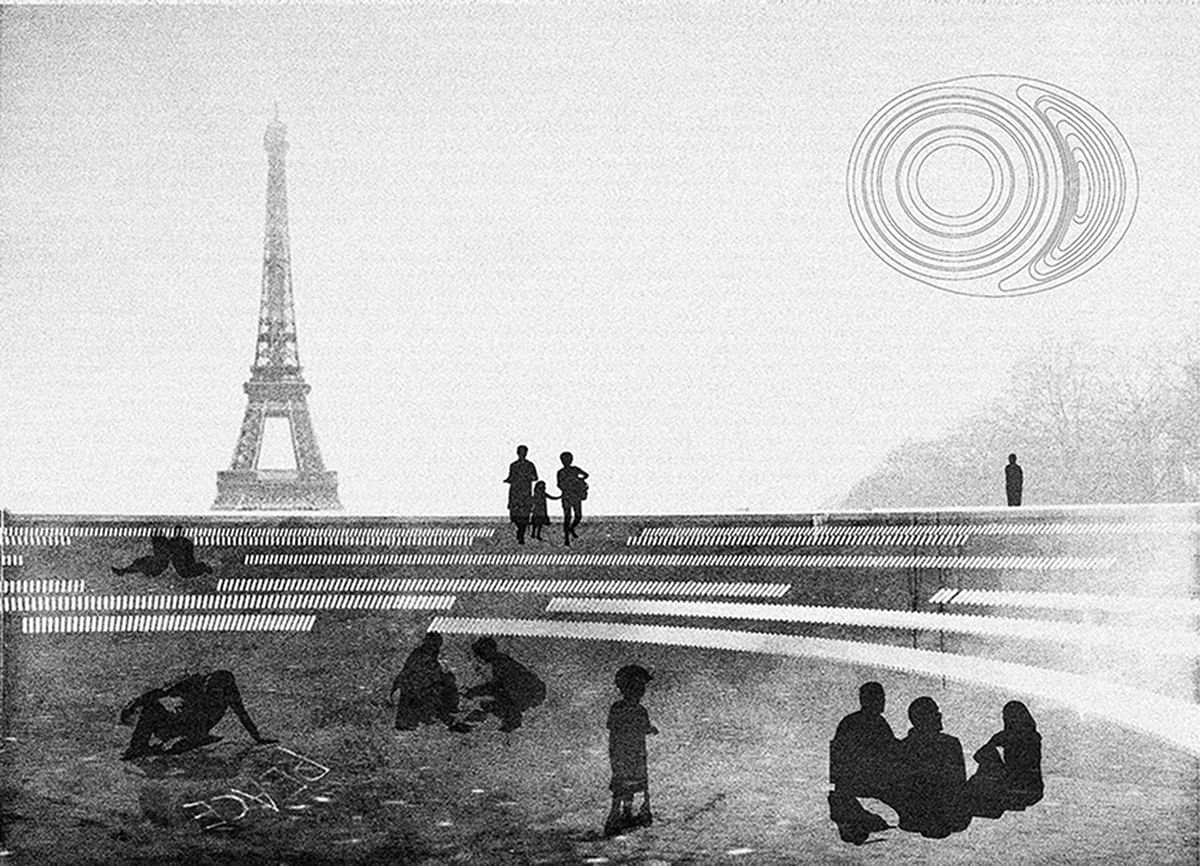
Related
Since we first announced archasm's Paris Pavilion: The Art of Peace this past March, the competition's core message of educating the public on social tolerance still rings true. As intimidating as such conversations can be, every effort to promote respect and tolerance is significant — especially when a great deal of headlining news over the last few weeks has reignited feelings of sorrow, fear, and anger.
In this competition, participants worldwide sent their ideas for a Peace Pavilion in Paris' Champ des Mars that embodies hope and tolerance through architecture and art. The pavilion had to be a free-standing temporary structure that would provide an ideal space for various public educational activities and art exhibitions. The competition attracted 324 registrations worldwide. After evaluating the entries, the jury picked three prize winners.
Have a look at the winning entries below.
1ST PLACE: Moussa Belkacem (France)
RELATED COMPETITION PARIS PAVILION : The Art of Peace
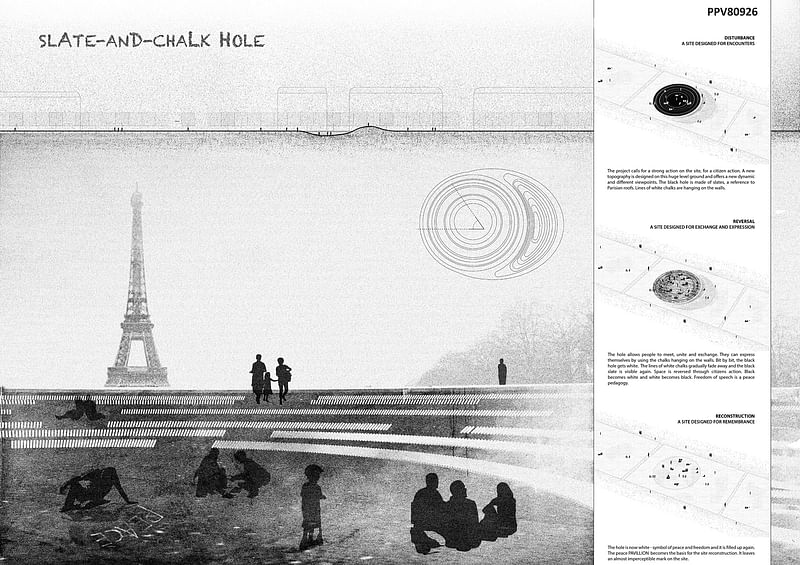
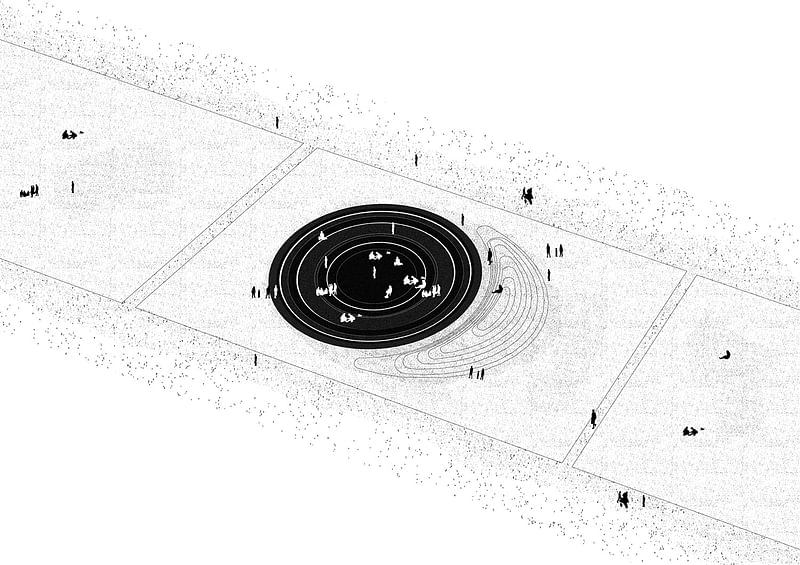

Project description:
“DISTURBANCE A SITE DESIGNED FOR ENCOUNTERS: The project calls for a strong action on the site, for a citizen action. A new topography is designed on this huge level ground and offers a new dynamic and different viewpoints. The black hole is made of slates, a reference to Parisian roofs. Lines of white chalks are hanging on the walls.
REVERSAL A SITE DESIGNED FOR EXCHANGE AND EXPRESSION: The hole allows people to meet, unite and exchange. They can express themselves by using the chalks hanging on the walls. Bit by bit, the black hole gets white. The lines of white chalks gradually fade away and the black slate is visible again. Space is reversed through citizens action. Black becomes white and white becomes black. Freedom of speech is a peace pedagogy.
RECONSTRUCTION A SITE DESIGNED FOR REMEMBRANCE: The hole is now white - symbol of peace and freedom and it is filled up again. The peace PAVILLION becomes the basis for the site reconstruction. It leaves an almost imperceptible mark on the site.”
2ND PLACE: Hankang Jin, Dinullah Bayu Ibrahim (Italy)
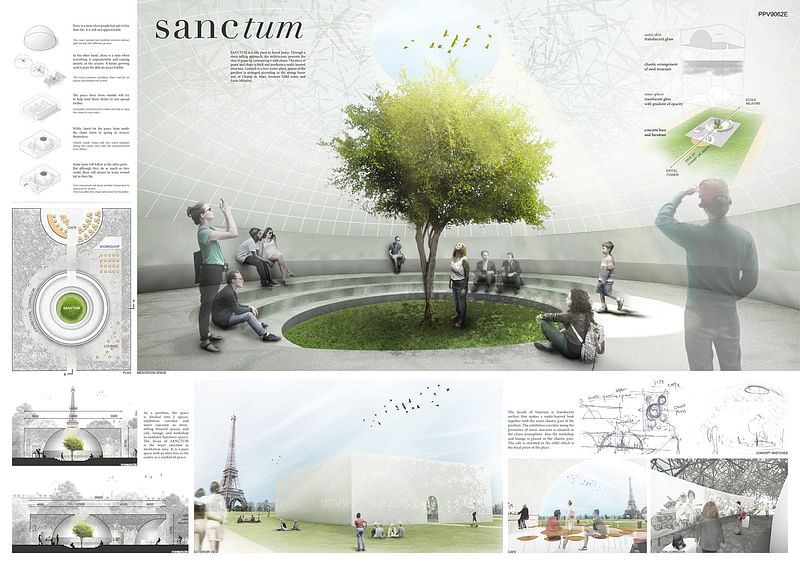
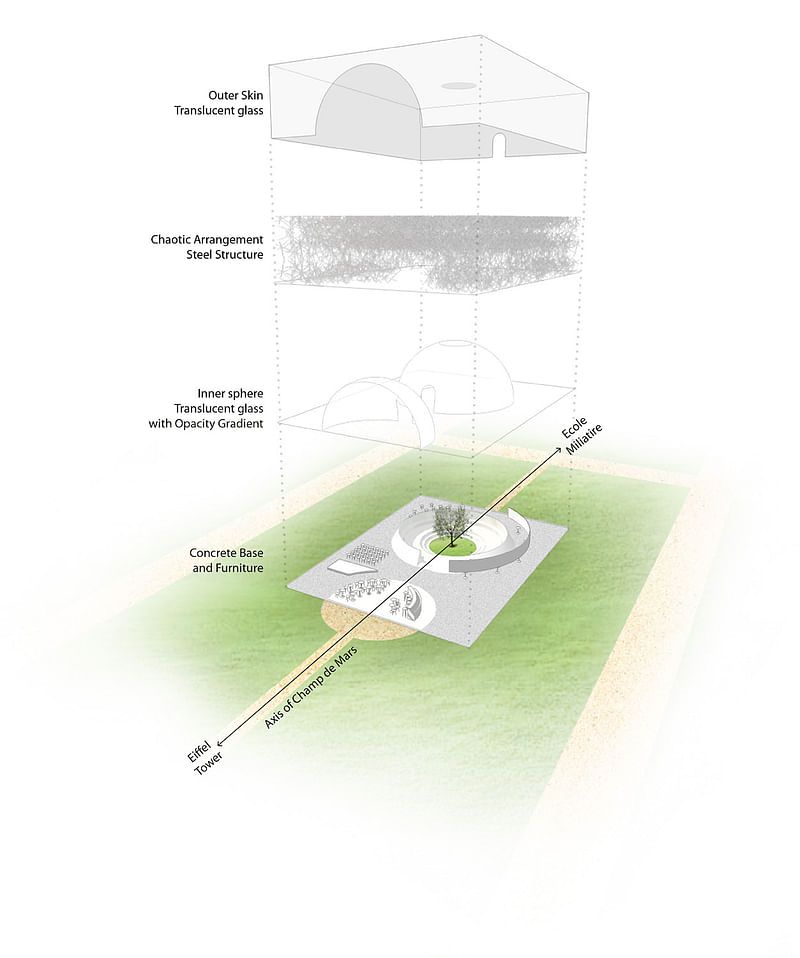
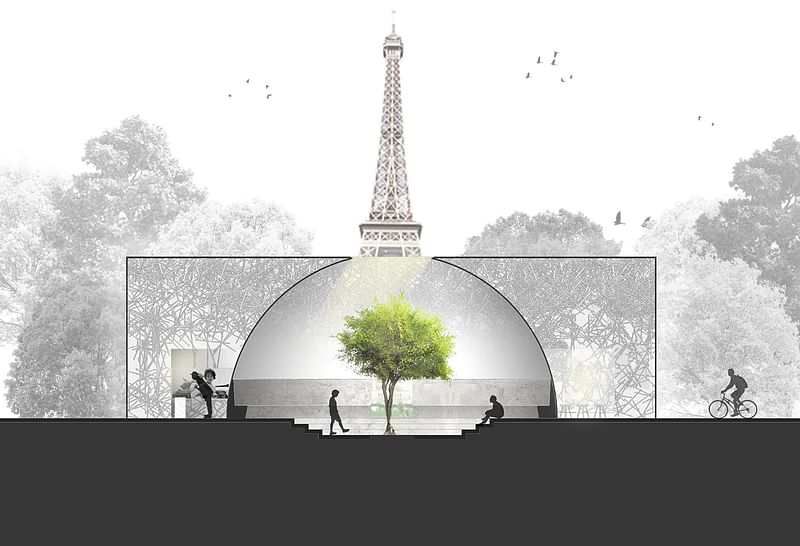
Project description:
“Peace is a state when people feel safe to live their life. It is soft and approachable. In the other hand, chaos is a state when everything is unpredictable and causing anxiety in the society. Chaos could grows fast and creates bigger cumulative anxiety. It keeps growing until it pops the delicate peace bubble. The peace force from outside will try to help hold them firmly to not spread further. While, Spirit for the peace from inside the chaos starts to spring to recover themselves. Some more will follow inside the other parts. But although they do as much as they could, there will always be some wound left in their life.
SANCTUM is a safe place to found peace. Through a story-telling approach, SANCTUM presents the idea of peace by contrasting it with chaos. The story of peace and chaos is built and produces a multi-layered structure. Located in a very iconic place, Spaces of SANCTUM is arranged according to the strong linear axis of Champ de Mars, between Eiffel tower and Ecole Miliatire.
As a pavilion, the space divided into 5 spaces, exhibition corridor and inner sanctum as story-telling focused spaces, and cafe, lounge, and workshop as function focused spaces. The focus of SANCTUM is the inner sanctum. It is a very pure space with an olive tree in the centre as a symbol of peace.
The facade of Sanctum is translucent surface that makes a multi-layered look together with the inner chaotic part of the pavilion. The exhibition corridor along the perimeter of inner sanctum is situated in the chaos atmosphere. Also the workshop and lounge is placed in the chaotic part. The cafe is oriented to the eiffel which is the focal point of the place.”
3RD PLACE: Yang Fei, Weizhe Gao (China)
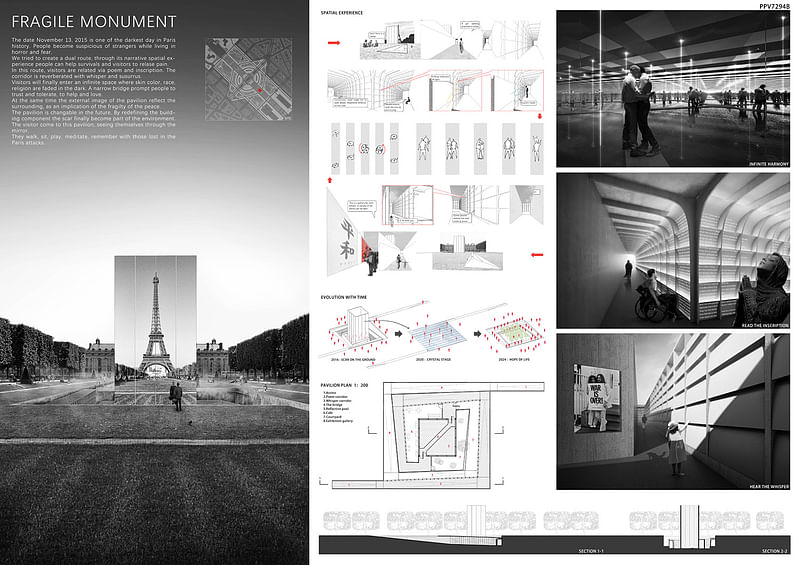
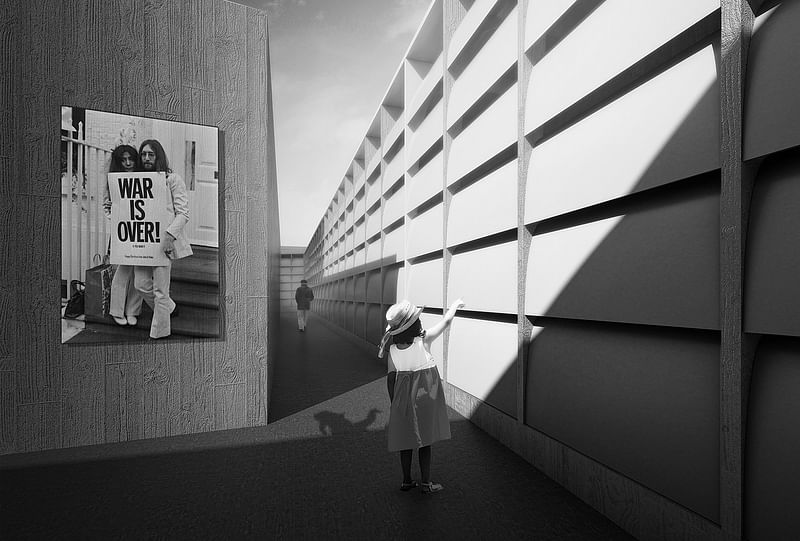

Project description:
“In this subject, we want to begin our design with forming relationships between people. We see people suffered from terrorist attacks become suspicious of strangers while living in horror and fear. The peaceful atmosphere is gone and the warmth of heart is hidden from prejudice and over-caution against different race/nation.
We know the terrorist try to disorganize trust between people and the feeling of safe by acting terrorist attacks, and finally they want to destroy the whole social order. What we are thinking about is a reverse way. We tried to create a dual route, through its narrative spatial experience people can help survivals and visitors to release pain.
People in different routes are separated by special partition. The sound reflecting board make the corridor reverberated with whisper and susurrus. People in two routes can’t see each other until they meet, while emotion slowly accumulate during the process.
Visitors will finally enter an infinite space where skin color, race, religion are faded in the dark. All the emotions are released at this moment. A narrow bridge prompt people to trust and tolerate, to help and love. People open their heart, and their arms to hug. We think this kind of physical movement can activate a forgotten part in people’s mind.
At the same time the external image of the pavilion reflect the surrounding, as an implication of the fragility of the peace. We hope the pavilion can integrate into the Champs de Mars & Parisian landscape, becoming a gentle landmark. The pavilion is also changeable in the future. By redefining the building component the scar finally become part of the environment. The visitor come to this pavilion, seeing themselves through the mirror. They walk, sit, play, meditate, remember with those lost in the Paris attacks.”
The jury featured:
- Cedric Petitdidier - Partner, Petitididier-Prioux Architectes, Paris
- Raphael Bouchemousse - Director, ID-WAD, Paris
- Adrian Welch - Chief Editor, e-architect, London

RELATED NEWS Send your ideas now for the "Paris Pavilion: The Art of Peace" competition

RELATED NEWS Chandigarh Unbuilt winners reinterpret Le Corbusier's Museum of Knowledge


Share
0 Comments
Comment as :